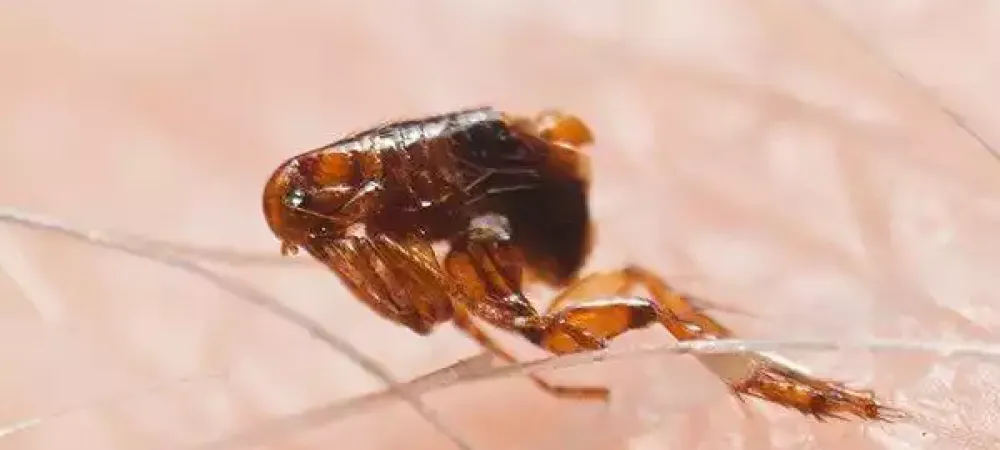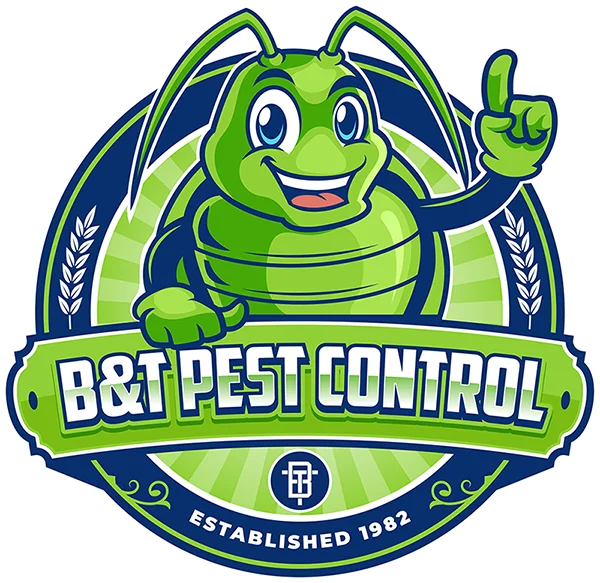How To Inspect Your Home For Fleas

Fleas are not just a nuisance for your pets; they can also invade your home, causing discomfort and potential health issues for your family. Identifying a flea infestation early is crucial to prevent it from spreading further and causing more significant problems.
Here’s a step-by-step guide on how to effectively inspect your home for fleas:
1. Start with Pets
The most obvious sign of a flea infestation is when your pets start scratching excessively or show signs of discomfort, such as restlessness, grooming more than usual, or avoiding certain areas of the house. Flea bites can cause itching and irritation, leading your furry friends to scratch, bite, or lick their fur excessively. Begin your inspection by thoroughly examining your pets—use a fine-toothed flea comb to comb through your pet's fur, focusing on areas like the neck, back, and tail base. Look for adult fleas, flea dirt (black specks resembling pepper), or any signs of irritation on your pet's skin.
2. Check Pet Bedding and Resting Areas
Inspect your pet's bedding, blankets, and any areas where they frequently rest or sleep. Look for flea eggs, larvae, or adult fleas hiding in the fabric folds, seams, and crevices. Fleas often lay eggs in these areas, so thorough examination is essential.
3. Examine Carpets, Rugs, and Upholstery
Fleas and their eggs can hide in carpets, rugs, and upholstered furniture. To examine the area, we recommend trying the white-sock test (see below for more information). Use a vacuum cleaner with a strong suction and a brush attachment to thoroughly vacuum these areas. Pay close attention to corners, edges, under furniture, and dark spaces where fleas may hide. After vacuuming, immediately dispose of the vacuum bag or empty the canister in an outdoor trash bin to prevent fleas from reinfesting your home.
4. Look for Flea Dirt
Inspect areas where your pets spend time indoors, such as near their feeding bowls, favorite resting spots, and along baseboards. Look for flea dirt, which appears as tiny black or dark brown specks resembling ground pepper and is essentially flea feces consisting of digested blood. Flea dirt is a sure sign of flea activity and indicates the presence of adult fleas feeding on your pets.
5. Check Outdoor Areas
While fleas primarily thrive indoors, they can also be present in outdoor areas where your pets spend time. Inspect outdoor pet enclosures, kennels, and play areas for signs of fleas or flea dirt. Keep grass trimmed, remove debris, and maintain a clean outdoor environment to reduce flea habitats.
6. Use a Sticky Trap
Place a flea sticky trap in areas where you suspect flea activity, such as near pet bedding or entry points. Fleas are attracted to the warmth and vibration of the trap, which can help capture adult fleas and monitor the severity of the infestation.
7. Monitor for Flea Bites
While fleas prefer animal hosts, they can also bite humans, especially if the infestation is severe and/or if you've been in close contact with pets or suspected flea-infested areas. Flea bites on humans often appear as small, red, itchy bumps, typically on the ankles, legs, or waist. If you notice unexplained bites, it could indicate a flea problem in your home.
8. Allergic Reactions
Some pets and humans may develop allergic reactions to flea saliva, leading to more severe symptoms like rashes, hair loss, or dermatitis. If you notice such symptoms in your pets or family members, consult a veterinarian or healthcare provider for appropriate treatment.
What to Do if You Suspect Fleas
If you suspect a flea infestation in your home, take immediate action to address the problem:
- Treat Your Pets: Consult your veterinarian for flea treatment options for your pets, such as topical treatments, oral medications, or flea collars.
- Clean Your Home: Vacuum carpets, rugs, and furniture regularly to remove adult fleas, eggs, and larvae. Wash pet bedding and linens in hot water.
- Use Flea Control Products: Consider using flea control products like sprays, powders, or foggers designed to kill fleas in your home.
- Prevent Reinfestation: Keep your pets on year-round flea prevention medications, regularly groom them, and maintain a clean home environment to prevent future infestations.
If you're unsure about conducting a thorough inspection or suspect a severe flea infestation, you should consulting a pest control professional like B&T Pest Control. With over 43 years of local experience, we have the expertise and tools to identify and address flea problems effectively, ensuring the safety and comfort of your pets and family. Contact us today to learn more about our flea control service.
We also encourage you to checkout our other blogs on what attracts fleas and how to prevent fleas.
What Do Fleas Look Like?
Fleas are small, wingless insects with flat bodies, powerful hind legs for jumping, and specialized mouthparts for feeding on the blood of their hosts. The insects are reddish-brown in color and about 1 to 2 millimeters long, making them challenging to spot. Their small size and ability to hide in fur, carpets, or bedding make them challenging to detect and control, especially during infestations.
Here's a description of what fleas typically look like:
- Size: Adult fleas are quite small, typically ranging from 1 to 4 millimeters (about 1/16 to 1/8 inch) in length. They are among the smallest wingless insects, making them challenging to spot without close inspection.
- Body Shape: Fleas have a flattened and laterally compressed body, which allows them to move quickly through fur, feathers, or carpet fibers. This shape also helps them navigate through the hair or feathers of their hosts.
- Color: The color of fleas can vary slightly depending on their species and age. However, most adult fleas are reddish-brown to dark brown in color. Their bodies may appear shiny due to their exoskeletons.
- Legs: Fleas have long and powerful hind legs, which are adapted for jumping. Their hind legs allow them to leap remarkable distances relative to their size, aiding in their ability to move between hosts or escape predators.
- Eyes: Fleas have relatively small eyes compared to their body size. They are adapted for detecting movement and changes in light, helping fleas locate potential hosts for feeding.
- Mouthparts: Fleas have specialized mouthparts designed for piercing and sucking. Their mouthparts include a sharp, needle-like structure called a stylet, which they use to puncture the skin of their host and feed on blood.
- Life Stage: Fleas go through a complete metamorphosis, starting as eggs, then developing into larvae, pupae, and finally emerging as adult fleas. The appearance of fleas varies depending on their life stage, with adult fleas being the most recognizable due to their mobility and size.
What Do Flea Eggs Look Like?
Flea eggs are tiny and difficult to see with the naked eye due to their small size and translucent appearance. They are oval-shaped and typically measure about 0.5 millimeters in length. Flea eggs are usually white or off-white in color, but they can also appear slightly translucent or semi-transparent.
Because of their small size and pale coloration, flea eggs can easily blend into the environment, making them challenging to detect without close inspection. They are often found in areas where fleas lay their eggs, such as pet bedding, carpets, rugs, upholstered furniture, and crevices or cracks in floors or walls.
What Do Flea Bites Look Like?
Flea bites can vary in appearance depending on the individual's sensitivity to flea saliva and the severity of the infestation. However, there are some common characteristics that can help identify flea bites:
- Appearance: Flea bites typically appear as small, red or pink bumps on the skin. They are often raised and may have a slightly swollen or inflamed appearance.
- Grouping: Flea bites can occur singly or in clusters. If a person is bitten by multiple fleas or repeatedly bitten in the same area, the bites may appear in groups or rows.
- Location: Flea bites commonly occur on areas of the body that are exposed or in close contact with infested areas. Common locations for flea bites include the ankles, legs, waist, armpits, and areas where clothing fits tightly against the skin.
- Itching: Flea bites are often accompanied by itching, which can range from mild to intense depending on the individual's sensitivity. The itching may lead to scratching, which can cause further irritation and potential infection.
- Redness and Swelling: Flea bites may cause redness and mild swelling around the bite site. In some cases, the bites may develop a pale center or a small blister-like appearance.
- Secondary Symptoms: In some individuals, especially those with allergies or sensitivities to flea saliva, flea bites can lead to secondary symptoms such as a rash, hives, or dermatitis. These symptoms may be more severe and require medical attention.
It's important to note that flea bites can be mistaken for bites from other insects such as mosquitoes, bed bugs, or mites. However, certain characteristics like the grouping of bites, location on the body, and the presence of pets with fleas can help differentiate flea bites from other insect bites.
What Is The White-Sock Test For Fleas?
The white socks test is a simple method to check for the presence of fleas in your home, especially in areas where pets spend time. Here's how you can perform the white socks test:
- Gather Supplies:
- A pair of white socks
- A source of light, such as a flashlight or bright lamp
- Optional: Flea comb or fine-toothed comb
- Prepare the Test Area:
- Choose a location where your pets often rest or where you suspect flea activity, such as pet bedding, carpets, or upholstered furniture.
- Make sure the area is well-lit to help you see any fleas or flea dirt.
- Perform the Test:
- Put on the white socks and walk around the test area, especially focusing on areas where pets frequent.
- Shuffle your feet slightly as you walk to disturb any fleas or flea dirt that may be hiding in the carpet or upholstery.
- Pay attention to any sensations of movement or itching on your ankles or legs, as this could indicate fleas jumping onto your socks.
- Examine the Socks:
- After walking around for a few minutes, remove the socks and examine them closely.
- Look for tiny black or dark brown specks on the socks. These specks are flea dirt, which consists of digested blood excreted by fleas. Finding flea dirt on the socks indicates the presence of fleas in the area.
- Additional Steps:
- If you suspect fleas based on the white socks test, you can further confirm by inspecting your pets for signs of fleas, such as excessive scratching or flea dirt on their fur.
- Use a flea comb or fine-toothed comb to comb through your pet's fur, especially focusing on areas where fleas are likely to hide, such as the neck, back, and tail base.
- Consult your veterinarian for flea treatment options for your pets and consider implementing flea control measures in your home to eliminate fleas and prevent reinfestation.
The white socks test is a quick and easy way to detect flea activity in your home, but it's important to note that it may not be as effective for detecting low-level infestations or fleas that are primarily outdoors.
